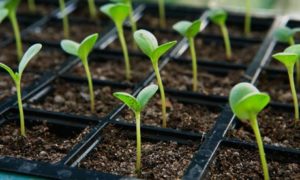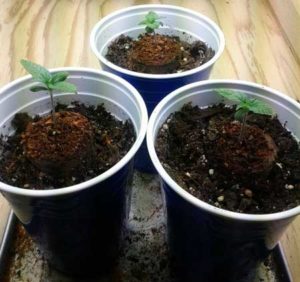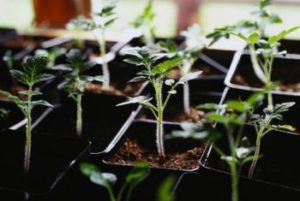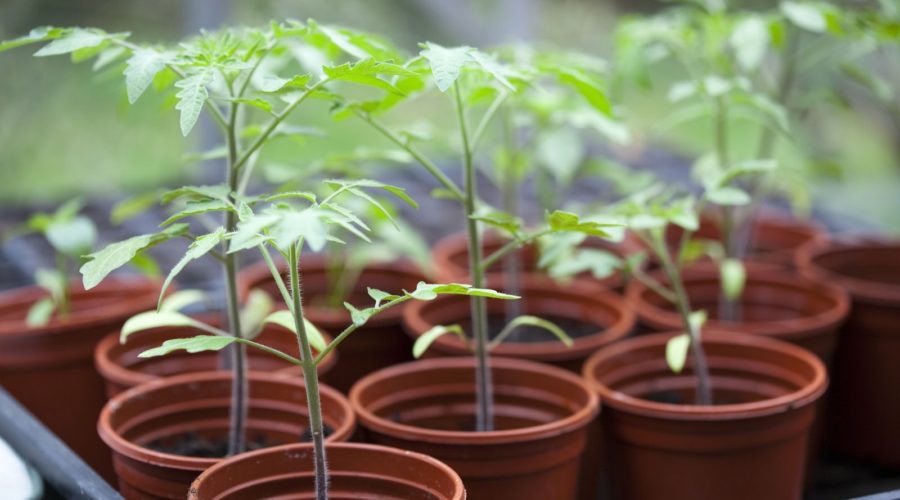Beginners Guide To Starting Seedlings
As many of you know, I’m really into sustainability, self-sufficiency, and diy projects.
Gardening and planting are some of my favorite hobbies. Many people have messaged me about seedlings and getting seeds started. So, if you know everything, you’re probably great to pass on this post. But I may surprise you with some interesting and new info!

The important thing is that you need to…
Keep it simple!
If you’re brand new to this, then start with just a few different plants. Tomatoes and marigolds are plants that are known to be pretty easy to grow. Basil is a great herb to start with (especially indoors).
Remember Light
Who would’ve thunk!
All little plant babies need plenty of light. If your seedlings don’t get enough light they will be weak as full-grown plants. Don’t deprive them.
If you’re growing indoors then choose a south-facing window. You can also assist seedlings with plant lights and timers to make sure they get enough. If you’re outside, then choose the side of your house that gets the most sun.
It’s All About Timing
So many of you might be starting with your seedlings indoors—it’s known to be easier as far as weather management and keeping them in moderate temperatures.
Your seed packets will tell you when to start the seeds inside and when you can plant the seedlings outside (usually 6-8 weeks inside).
However, veggies such as beans and squash are better started outdoors, rather than inside. In this case, the package may tell you to plant directly.
Getting Your Seedlings From Seed to Garden

So let’s say that you’re starting your seedlings indoors and then moving them outside to your garden.
There are 6 easy steps you can follow to the successful development of your plants.
- Start with the right container: Generally you want to start with something about 2-3 inches deep. They also deep appropriate drainage holes in order to release the extra water. Because I love my DIY projects and upcycling things, I like to use old yogurt cups or decorated paper cups. However, you can also just get a tray that’s specifically used for seedlings.
- Get the right type of potting soil: There are specific soil bags that are intended for growing seedlings. Using any old dirt from your garden or old potted plants will not cut it. The right kind of soil will give your plants the best head start in health and growing. Put the soil into moist containers. You will also want to use a liquid fertilizer for your seedlings while they grow until you get them into your garden.
- Plant it right: Some seeds need depth, others you can sprinkle on top. Remember each plant is different. Lightly water the plants. I like to use a spray bottle to water them so the water doesn’t overwhelm them. Use a plastic wrap covering to cover the seeds to help keep them moist with the condensation. Remove the wrap once the greens start peaking their heads through the dirt.
- Feed appropriately: Mist the plants, use the right fertilizer, and don’t let the dirt get soggy. You want the dirt to kind of dry out between waterings. Using a small fan on your seedlings is excellent because it allows the dirt to dry and ensures excellent circulation and disease prevention.
- Light: Light is still important. Rotate the pots so that your plants don’t lean one way towards the light. Place your plant light a few inches above the tops of your plants. I put my lights on a timer for 15 hours a day. Your seedlings need darkness too, so don’t put the light on them 24 hours a day. Raise the lights as your babies grow.
- Gradually move your seedlings to your garden: Transition your plants gradually by placing your pots outside for a few hours a day and bring them in at night. Over about a week you’ll want to expose them to more and more each day until you fully plant them in the garden.
Common Problems

Some of my seeds didn’t germinate—what happened?
Many things can cause this to happen. Dig up one of your seeds and examine it. If the seed is swollen and soft, it has rotted and you will have to start over. Rotting happens when the soil is too wet and cold. If the seed is dried out they were either too old or didn’t get enough water to take root.
My plants are seedlings are weak and spindly—what should I do?
Spindly plants means they aren’t getting enough light. You can supplement grow lights to help keep your plants growing stronger. Warmer temperatures can also cause spindly plants. So keep them in a cooler room or lower the room temperature.
My plants were growing fine until the suddenly toppled over—why?
This toppling is usually caused by fungus in the soil called damping off. It’s hard to get rid of once it’s already in the soil. To avoid it, provide good air circulation and use good potting soil.
Why is there mold growing on top of my soil?
The presence of mold means that the soil is too wet. The easiest thing you can do is to withhold water for a few days (until it’s dried up), and increase air circulation around your plants. If that doesn’t work you can always scoop off the mold and move the plants into different soil.
